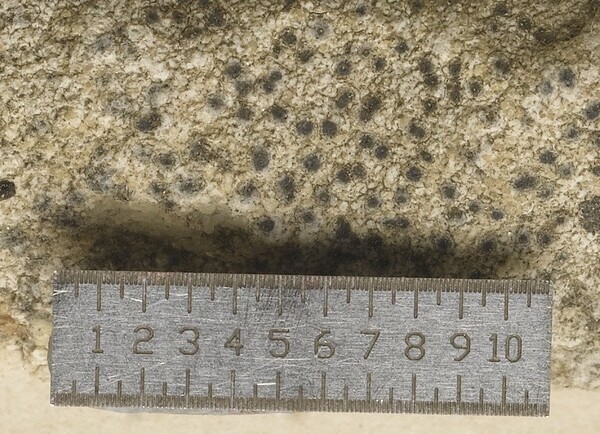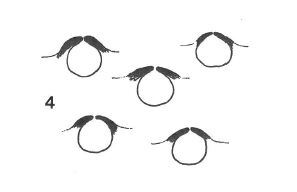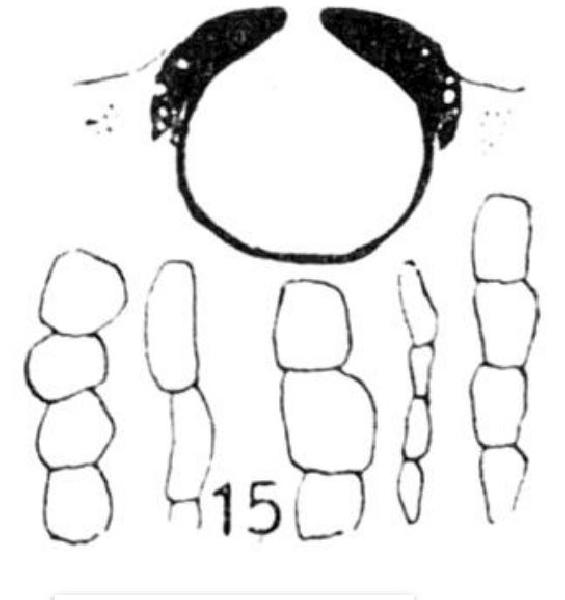Verrucaria monacensis Servít
Preslia, 24: 364, 1952.
Synonyms:
Distribution: N - Piem.
Description: Thallus crustose, episubstratic, grey-brown, irregularly rimose, with a finely verruculose surface, becoming thinner at margins, without a distinct prothallus. Cortex very poorly developed; thallus in section densely filled with crystals. Perithecia black, forming hemispherical projections. Involucrellum 40‒70 µm thick laterally, reaching down to c. 1/3 of the perithecium, adpressed to exciple or slightly diverging in lower part; exciple subglobose, 0.2-0.3 mm across, the wall brownish to dark brown around the ostiole, otherwise colourless; hamathecium of 20-30 μm long periphyses and periphysoids, interascal filaments absent; hymenial gel hemiamyloid, I+ red (I+ blue at very low concentrations of I), K/I+ blue. Asci 8-spored, clavate, I-, fissitunicate, the wall thickened above, with an ocular chamber, dehiscent by extrusion of an endotunica to form a delicate rostrum, Verrucaria-type. Ascospores 1-celled, hyaline, ellipsoid, 18-25 x 8-13 μm. Photobiont chlorococcoid. Spot tests: K-, C-, KC-, P-, UV-. Chemistry: without lichen substances.
Note: according to Breuss (2016) this species was described on the basis of a sample collected on the calcareous pebbles of a scree slope near München, and identified by F. Arnold as Amphoridium dolomiticum (= Verrucaria dolomitica), from which it differs in several important characters; the species also resembles V. muralis, differing in the rimose thallus. Beside the type collection (the original station is probably lost) the species was reported by Sbarbaro (see Nimis 1993: 754) from Piemonte; since Sbarbaro was in close scientific contact with Servít, it is probable that the latter had identified the Italian samples.
Growth form: Crustose
Substrata: rocks
Photobiont: green algae other than Trentepohlia
Reproductive strategy: mainly sexual
Poorly known taxon in need of further study
Commonnes-rarity: (info)
Alpine belt: absent
Subalpine belt: absent
Oromediterranean belt: absent
Montane belt: absent
Submediterranean belt: very rare
Padanian area: absent
Humid submediterranean belt: absent
Humid mediterranean belt: absent
Dry mediterranean belt: absent

Predictive model
Growth form: Crustose
Substrata: rocks
Photobiont: green algae other than Trentepohlia
Reproductive strategy: mainly sexual
Poorly known taxon in need of further study
Commonnes-rarity: (info)
Alpine belt: absent
Subalpine belt: absent
Oromediterranean belt: absent
Montane belt: absent
Submediterranean belt: very rare
Padanian area: absent
Humid submediterranean belt: absent
Humid mediterranean belt: absent
Dry mediterranean belt: absent

Predictive model
 INDEX FUNGORUM
INDEX FUNGORUM
 GBIF
GBIF




